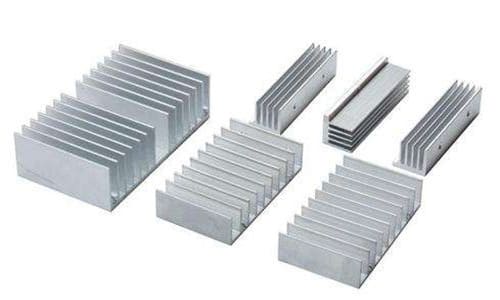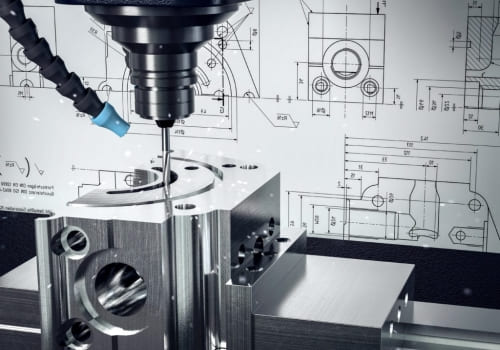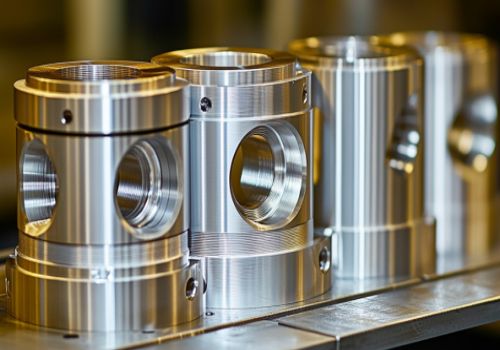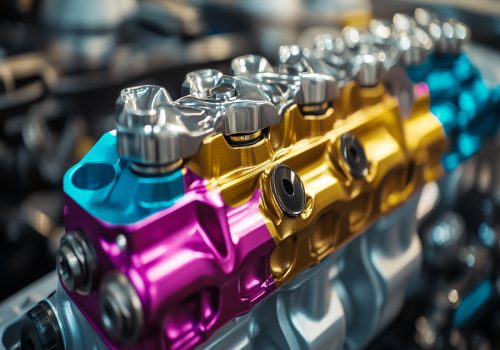A heat sink is a device for cooling heat-prone electronic components in electrical appliances. Most of them are made of aluminum alloy, brass or bronze. They can be made into plate, flake, multiple flake shape etc. For example, the CPU central processor in the computer, the power tube, the line tube in the TV, and the power amplifier tube in the power amplifier all use heat sinks.
In terms of heat sink material, the thermal conductivity of each material is different. According to the thermal conductivity from high to low, they are silver, copper, aluminum and steel. However, if silver is used as the heat sink, it will be too expensive, so the best solution is to use copper. Although aluminum is cheap and aluminum heat sinks are used more, it is clear that the thermal conductivity is not as good as copper (only about 50% of copper). The commonly used heat sink materials are copper and aluminum alloys, both of which have their own advantages and disadvantages.
Copper has good thermal conductivity, but the price is more expensive, the processing difficulty is higher, the weight is too large, the thermal capacity is small, and it is easy to oxidize.
Pure aluminum is too soft to use directly. Aluminum alloys with sufficient hardness are used. The advantages of aluminum alloys are low price and light weight, but the thermal conductivity is much worse than copper.
For ordinary users, aluminum heat sinks are sufficient to meet the heat dissipation requirements.
Here, let’s discuss the processing method and process of aluminum heat sink.
1. Aluminum Extruded Heat Sink
Aluminum material has been used in the heat sink market for a long time because of its soft and easy processing characteristics. Aluminum extrusion technology simply means that after heating aluminum ingots at high temperature, the aluminum liquid flows through the extrusion mold with groove under high pressure to make the initial heat sink, and then after cutting the initial heat sink, the common heat sink is made.
The cost of the aluminum extruded heat sink is low, and the technical threshold is not high. However, due to the limitation of its material, the ratio of the thickness and length of the heat sink fin cannot exceed 1:18, so it is difficult to increase the heat dissipation area in a limited space. The heat dissipation effect of the aluminum extruded heat sink is relatively poor, and it is difficult to be qualified for the high-frequency CPU.
2. Forged heat sink
The forging process is formed by heating the aluminum block and filling the mold with high pressure. Its advantage is that the fin height can reach more than 50mm and the thickness is less than 1mm. It can obtain the maximum heat dissipation area in the same volume, and forging is easy to obtain good dimensional accuracy and surface finish. However during forging, due to the low plasticity of the metal, it is easy to crack when deformed, and the deformation resistance is large. It needs large tons forging machinery (more than 500 tons). It is also because of the high cost of equipment and molds that the product cost is extremely high.
3. Cutting heat sink
Compared with aluminum extruded heat sink, the cutting process solves the limitation of the ratio of fin thickness to length of the heat sink. The cutting process is to use special tools to cut the entire material into layers of fins. This heat dissipation fin can be as thin as 0.5mm, and the fin and base of the heat sink are integrated, so there will be no interface impedance problem. However, this cutting process has a lot of waste and low yield in the production process.
The basic production process of the heat sink includes:
product demand – drawing development – mold making – trial mode – cutting, CNC processing – functional size sample confirmation – surface treatment (Anodize/powder coating/Other) – Production Input – Packaging (Inspection) – Delivery
As a professional CNC machining manufacturer, DO Machining not only produce metal parts, but plastic and wood parts are also available.
Please visit our CAPABILITIES and what PRODUCTS we did.
CNC machining service is the core business of DO Machining, from protptyes to bulk production, our professional 3/4/5 aixs CNC machining centers, CNC turning equipments, CNC turning-milling equipments, CNC grinding machines etc., are operated by well trained manufacturing engineers to meet the demands from global 1000+ customers in 30+ industries.
CNC Machining can be done starting with blanks produced from standard bar stock or one of DO Machining other manufacturing processes.
Contact us to see how we can provide overall value to your CNC machining needs.










